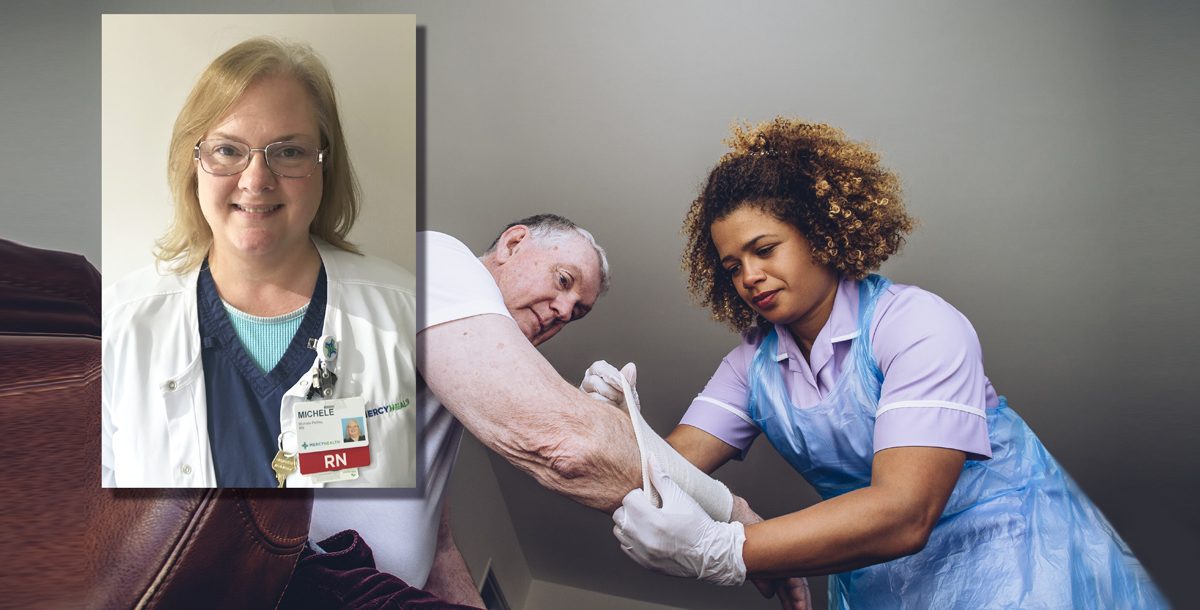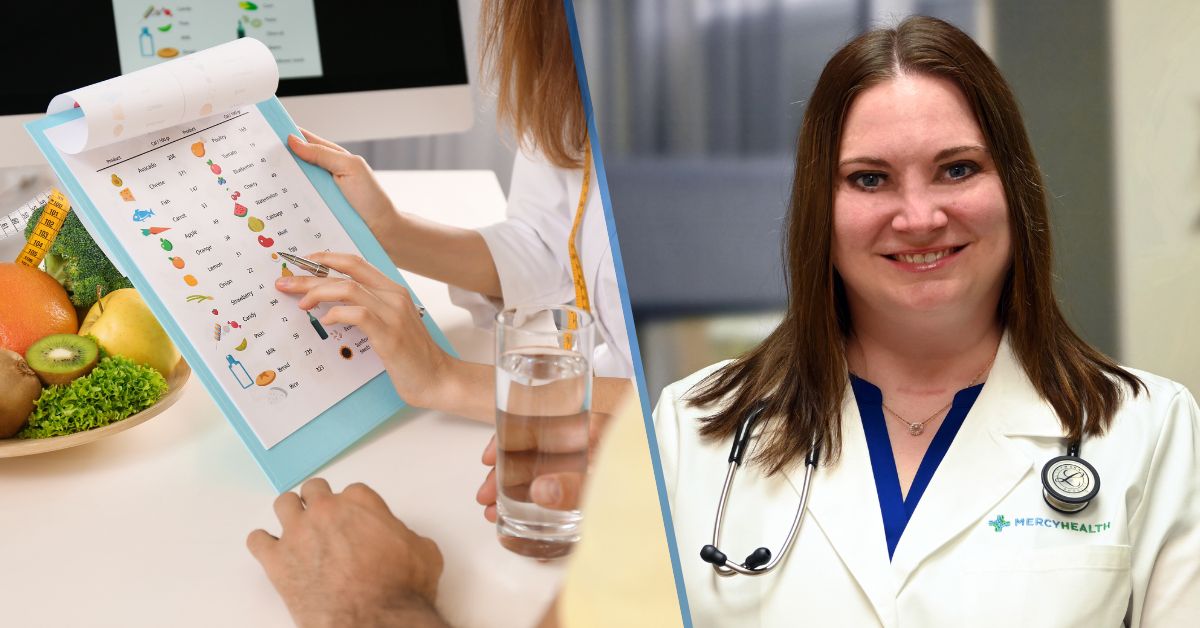Most of us take healing from a minor injury for granted. You cut your foot? It will be fine in a few days. Got a bruise? No big deal.
But for some people, healing doesn’t come as quickly, and protecting the skin becomes a big deal. This is especially important for individuals who are at risk for developing a pressure injury, sometimes referred to as a bed sore.
Pressure injuries tend to happen when a person remains in the same position for a long time. This puts pressure on an area of skin for so long that it becomes damaged. It’s most likely to happen to a bony area of the body like the knees, elbows, hips or tailbone. A pressure injury might look like a patch of red skin, a warm area, spongy or hard skin. The top layers of the skin might even break down.
Michele Pelfrey, an experienced wound care nurse at Mercy Health – West Hospital, cares for patients with pressure injuries every day. She provides care and makes education a priority for her patients and their families.
“I like to do continuous education, just to make sure that when we discharge a patient, the family knows what to do,” Michele says.
Earlier in her career, Michele worked in the intensive care unit. There she found it especially rewarding to care for patients who were the sickest and who had wounds.
Michele’s manager asked her if she’d be interested in going to school to become a wound care nurse. After completing the program, she went on to get her master’s degree in nursing education. Throughout her journey, Michele has been a Mercy Health nurse.
“I like the fact that we’re patient centered, and I love the people that I work with,” she says.
Unlike a nurse who is based in a certain unit, Michele visits patients throughout the hospital who have wounds that need the specialized care she can provide. She consults with other nurses and spends a lot of time teaching patients and their families how to prevent pressure injuries.
Pressure injury risk factors
Michele explains that the people most at risk for developing a pressure injury are:
- People affected by malnutrition. When there is little body fat, prominent bones can create pressure points. In addition, malnutrition causes thinner, weaker skin.
- Individuals with vascular disease or poorly controlled diabetes. Both of these can lead to nerve damage and also affect the body’s ability to heal itself.
- People with paralysis and other mobility problems. They spend a lot of time in one position, especially when using a wheelchair, and do not feel the signs of a wound developing. In addition, the health condition that led to their lack of mobility may also make it difficult for them to shift their weight.
- Individuals who are elderly. Their skin is thinner, drier and more fragile.
- People with incontinence. This can lead to skin irritation.
Preventing pressure injuries
To prevent a pressure injury, it’s important to change positions frequently and avoid items that can create pressure points against the skin.
For example:
- Avoid clothing with thick seams, buttons or zippers that press on the skin
- DO NOT wear overly tight clothing
- For someone who uses a wheelchair, make sure it’s the right size
In addition, treat your skin gently:
- Avoid strong soaps or talc powder
- DO NOT scrub your skin hard
- Pat your skin dry thoroughly after washing
- Use moisturizers daily
- Never drag yourself when changing your position or getting in and out of bed
If you or a loved one is at risk for pressure injuries, talk to a Mercy Health provider about prevention and how to identify signs of trouble.







1 Comment
Post a CommentVal
This is such important work. As I watch my father struggle with mobility issues and a handful of additional risk factors, the focus on education and prevention is appreciated! Michele, thank you for your knowledge and for your dedication to your trade. And thank you to all those wound care nurses that are caring for our patients and supporting our care team members through their knowledge and expertise.